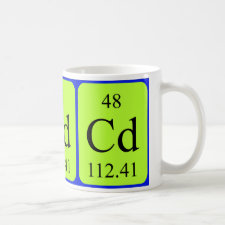Authors: Minaberry Y, Tudino MB
Article Title: Ionic Imprinted amino functionalized mesoporous sorbent for the selective minicolum preconcentration of cadmium ions and determination by GFAAS.
Publication date: 2018
Journal: Analytical Methods
DOI: 10.1039/C8AY01496E
Abstract: An amino-functionalized mesoporous sorbent with double imprinting of Cd(II) and surfactant micelles was prepared via the sol gel co-condensation method. The material was employed for the highly selective preconcentration of cadmium ions in minicolumns (MC) and its determination at ultratrace levels by graphite furnace atomic adsorption spectroscopy (GFAAS). For comparative purposes Ion- Imprinted (II) and non-imprinted (NI) solids were characterized by SEM, FTIR and nitrogen gas adsorption-desorption. Batch experiments including pH influence, sorption capacity and adsorption kinetics were carried out in order to optimize the adsorption-elution process. II showed a greater absorption capacity than NI sorbent being 122 mg g-1 and 67 mg g-1 respectively, consistent with Langmuir isotherm equation. Sample and elution flow rates, volumes of sample and eluent as well as the choice of the most suitable eluent were tested and optimized under MC dynamic conditions for both sorbents. Under optimized conditions, the II filling showed a preconcentration factor (PCF) of 50 whilst that of NI was 10. The higher selectivity of filler II was revealed when comparing the maximum tolerable limit (MTL) of interfering cations and anions commonly found in water samples, being the MTL for II from 100 to 200 times higher than for NI for all the tested concomitants. The main figures of merit found for solid II are: limit of detection 0.0011 ng mL-1 (3sb), linear range of 0.01-20 ng mL-1; RSD% 2 (n=6; 0.05 ng mL-1). Additionally, the operation under dynamic conditions together with the employment of low volumes of sample and eluent, allowed a large lifetime of sorbent II of more than 700 cycles with no loses of sensitivity or need of refilling.The method was successfully applied to the determination of traces of Cd(II) in osmosis and tap waters with recoveries of 98.8Gă˘101.3%. A full discussion will be provided, including the comparison with other methods already reported in the literature



Join the Society for Molecular Imprinting

New items RSS feed
Sign-up for e-mail updates:
Choose between receiving an occasional newsletter or more frequent e-mail alerts.
Click here to go to the sign-up page.
Is your name elemental or peptidic? Enter your name and find out by clicking either of the buttons below!
Other products you may like:
 MIPdatabase
MIPdatabase









